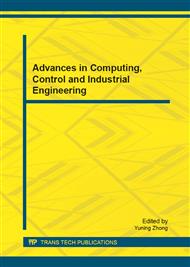p.216
p.221
p.227
p.233
p.239
p.245
p.250
p.254
p.261
Simulation of Automotive Engine Lubrication System Based on AMESim
Abstract:
In order to increase automotive engine development efficiency and reduce the cost, a simulation model is often used, in this paper, with software AMESim the automotive engine lubrication system model was built to simulate the steady lubricant flow rate and pressure in the system at difference engine speed. Comparison between simulation and measurement on the test bench shows that the simulated results are in good accord with experimental data, the lubricant flow rate deviation is less than 3.5% and the pressure deviation at the measurement points is less than 4.0%, so it can be concluded that the model can be used to simulate the automotive engine lubrication system steady lubricant flow and furthermore optimize the system.
Info:
Periodical:
Pages:
239-244
Citation:
Online since:
November 2012
Authors:
Keywords:
Price:
Сopyright:
© 2012 Trans Tech Publications Ltd. All Rights Reserved
Share:
Citation:


